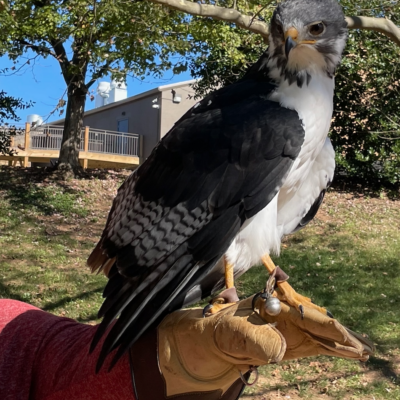 |
In a 61-year career practicing traditional building trades (like hewn-log cabins, blacksmithing and stonework) —and teaching workshops to keep those skills alive—Charles “Mac” McRaven has seen lots of long workdays. But the day when he and his wife, Linda, hosted a stonewalling competition seems to stand out for both of them.
The occasion: the 2001 Stonework Symposium, an international event held that year in Charlottesville. The McRavens had been to the 2000 event in Santa Fe and felt it was heavy on talk. “Everybody was aching to get out and build,” Mac says. So they planned something more hands-on: a competition in which nine two-person teams would each build a 10′ section of dry-stacked stone wall. Together, the sections make a single curving structure.
The site: A 100-acre property the McRavens own in Keswick, on which they’ve started building a 3,800-square-foot stone house designed by Fred Oesch to be energy-efficient and low-upkeep, as well as to take advantage of sweeping Albemarle views. The house is unfinished, but the stone wall stands as a record of the day and the personalities who created it. Says Linda, “Every time I look at it I see something new.”
•
Charles: As far as we know, this was the first ever stonewalling competition in America. We paired advanced stonemasons with beginners. We started at 8 in the morning and didn’t stop ‘til 8 at night when the sun was going down. People had a ball. They didn’t want to stop for lunch.
Patrick McAfee [an Irish master stonemason] and my son worked on the section with the really big brown rock [on top]. It was over 90 degrees, and in Ireland they don’t get that kind of temperature. He said, ‘We don’t have this kind of heat, and we certainly don’t work in it!’ So he said, ‘Get me the biggest rock you have. I want to be done with this.’ It was the only stone I set with the tractor.
Linda: Then he sat down in the shade.
Charles: There were 90 people here, most of them watching.
Linda: All day long, people coming and going. Local architects, local stonemasons who couldn’t help lifting a stone or two.
Charles: Advanced masons were happily lending their tools and taking 20 minutes to show a beginner how to use them.
It was August. There was a great deal of complaining about that. But we had tents set up, and Linda had refreshments.
Linda: Unlimited Gatorade and water.
Charles: I was busy running back and forth with the tractor [bringing rocks to the teams]. It was great fun.
Linda: We had masons from Japan, England, Scotland, Israel, Ireland.
Charles: The techniques are the same all over the world. And they haven’t changed in thousands of years. When stonemasons get together they become friends. They have things in common—the bruised fingers…
Doug Bryant purposely used irregular rocks because he liked the flow away from the horizontal. Doug likes to bend that rule. He came around the tree and got this flow.
Linda: He had to go uphill and curve at the same time. If you look at that curved section from the side, it’s pretty, how it rolls. When I watched him work I couldn’t believe the sensitivity he has.
Charles: The winning section [by Kevin Fife and his assistant] followed all the good rules of stonework. We had on hand 90 tons of stone and used about 36 tons. There is not good sandstone like this here; we have to go over to the Valley or West Virginia or Pennsylvania to get it. What we have around here is a real tough granite.
Linda: To be a good stonemason you have to be an artist. You have to have the eye, in the same way that owning a camera doesn’t make you a photographer.
Charles: Stone is the hardest, longest-lasting substance we have in the whole world. Stonework is very satisfying; it’s a real accomplishment.





